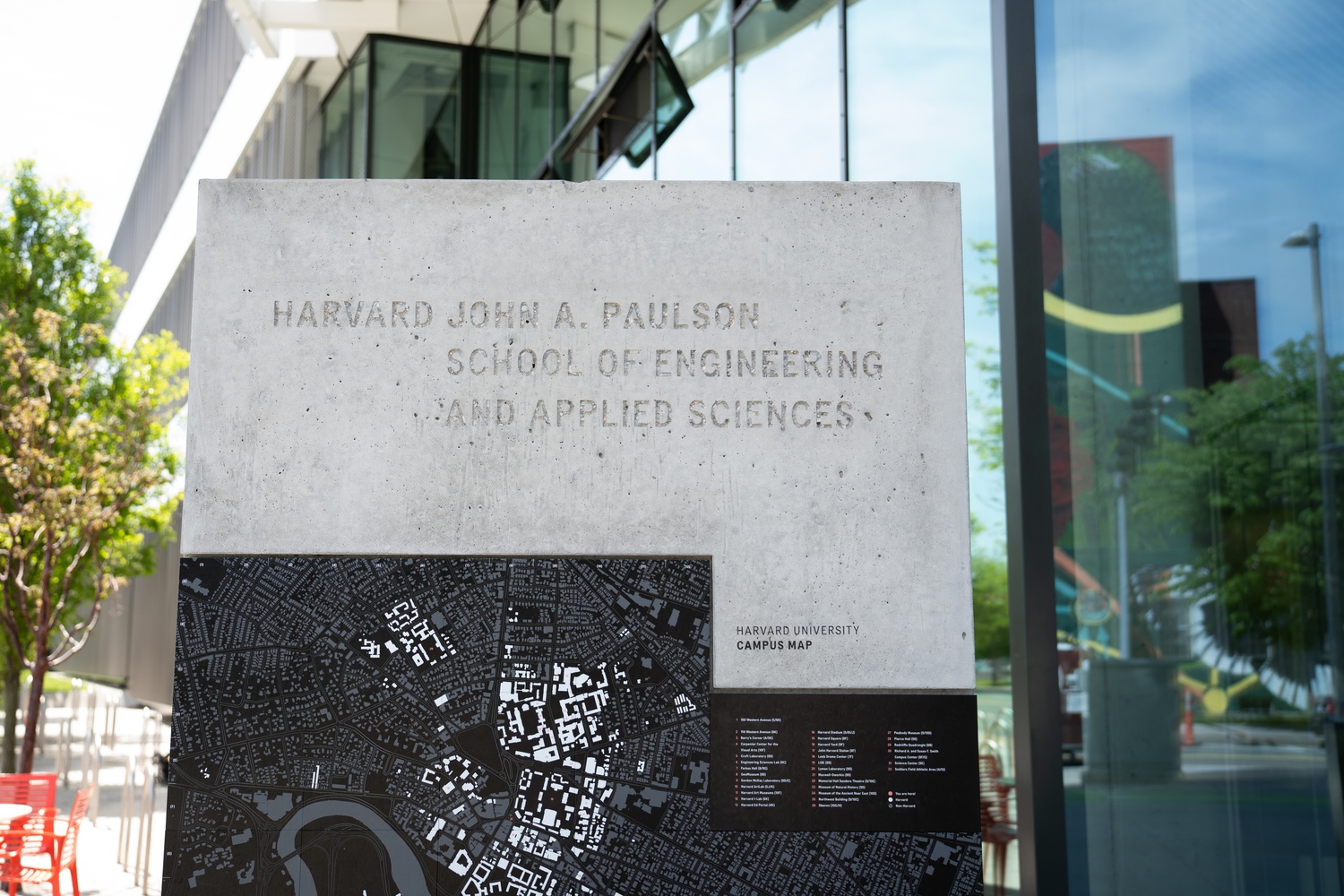
News
Summers Will Not Finish Semester of Teaching as Harvard Investigates Epstein Ties

News
Harvard College Students Report Favoring Divestment from Israel in HUA Survey

News
‘He Should Resign’: Harvard Undergrads Take Hard Line Against Summers Over Epstein Scandal

News
Harvard To Launch New Investigation Into Epstein’s Ties to Summers, Other University Affiliates

News
Harvard Students To Vote on Divestment From Israel in Inaugural HUA Election Survey
Harvard-Led Researchers Are Creating an Air Quality Sensor Inspired By Dog Noses

Researchers led by Harvard School of Engineering and Applied Sciences professor Joanna Aizenberg are developing a new air quality sensor inspired by a dog’s nose that promises more specificity than existing products.
Dubbed the Sensory Nature-Inspired Fact Finder of Indoor Air — or SNIFFIA — the device detects specific volatile organic compounds in the air and aims to broaden the number of detectable pollutants.
The researchers — from SEAS, Harvard Graduate School of Design, University of North Carolina Chapel Hill, and the Wyss Institute — received phase one funding from the National Science Foundation in January 2024 and are projected to enter phase two in 2025.
Unlike existing air quality sensors — which passively test the surrounding air — SNIFFIA attempts to mimic how dogs adapt their sniffing patterns based on changing environments.
“Dogs don’t just have better olfactory receptors in their noses,” said Haritosh Patel, a graduate student at SEAS. “It’s actually how they use that and how they uptake the air samples.”
According to Patel, SNIFFIA is a “living sensor” that actively samples surrounding air and adapts to real-time data using machine learning and artificial intelligence.
After the “first sniff,” he said, the ML model can process the signal, predict the chemical composition and quantities, and inform the length of the “next sniff.”
The device can also detect specific chemicals in the air rather than simply aggregating them into a total measurement, which Patel said is not informative to building managers or homeowners, since the compounds could be anything from benign perfumes to carcinogenic chemicals “emanating from furniture or printing jobs or art supply, sometimes at K-12 schools.”
“It’s almost like a nutrition label for the air we breathe, which we’ve been missing,” Patel said.
While SNIFFIA is not yet ready for the market, researchers are excited about its potential applications in commercial buildings — such as office spaces and schools — and hope to launch commercially within the next two years.
Researchers said SNIFFIA’s technology could also have applications in LEED certifications for sustainable building.
There is no foreseen limit on the diversity of materials and chemicals that “this technology can be applicable to currently,” Alexander Tropsha, a professor at UNC Chapel Hill working on the project, said. “It really touches on everyone.”
Want to keep up with breaking news? Subscribe to our email newsletter.
